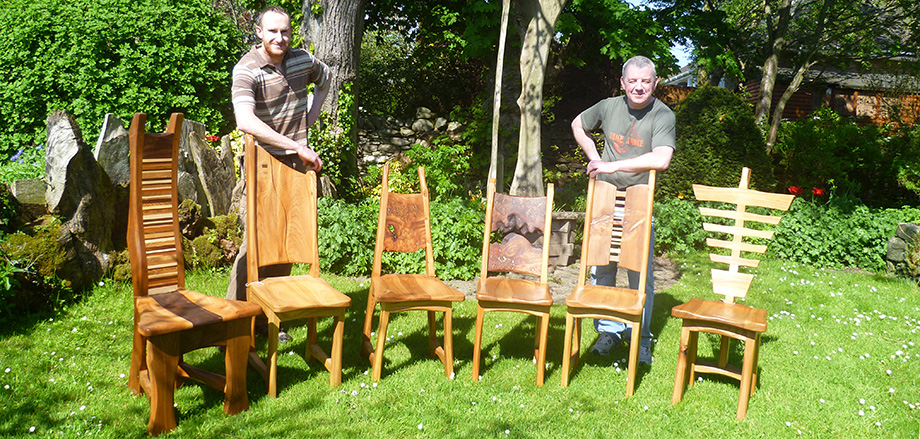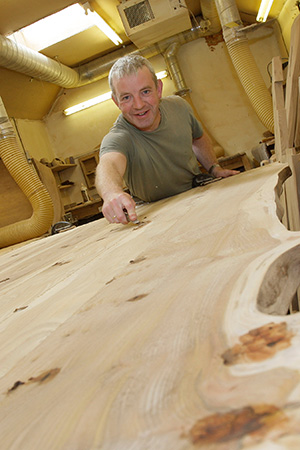The Wood Neuk
Origins
‘The Wood Neuk’ is an enterprise run by David Lightly from a workshop in the heart of the Scottish Borders, specialising in the design and making of high quality bespoke furniture. Their furniture is made using premium grade native hardwoods including Elm, Oak and Ash which they take pride in sourcing themselves.

From tree to the finished piece, David is involved in every process. Firstly, they oversee the cutting of the tree, followed by the meticulous drying process, before finally the timber is ready to use in creating one of The Wood Neuk’s unique pieces of handcrafted furniture, resulting in a truly personal experience for maker and customer alike.
‘The Wood Neuk’ grew out of ‘Tim Stead Furniture’ and latterly ‘The Workshop of Tim Stead’ where David has 30 years of experience creating fine sculptural furniture,guided by the designs of the renowned late sculptor and artist Tim Stead.’The Wood Neuk’ is fully licensed to continue Stead’s classic designs alongside many exciting new designs of their own.
David Lightly
After leaving Selkirk High School in 1989, David served a 3 year apprenticeship with craftsman Tim Stead as well as studying part time at Edinburgh College of Art. He worked alongside Tim Stead until his untimely death in 2000.
David went on to work for Tim’s wife Maggy at ‘The Workshop of Tim Stead’ through to 2013 when he formed ‘The Wood Neuk. David lives in the central Borders with his partner Suzy and their daughter Niamh.

As a furniture maker I seek perfection, most makers do. But the local materials I source are far from perfect and that is the point. When I look at a piece of wood I look for imperfection, I look for splits, holes and bark pockets that I can stitch, fill and repair. For me repairing a beautiful piece of wood, which would normally be discarded, is one of the greatest pleasures of my job.
Sourcing timber is another rewarding experience. Everyone likes trees, but I look at a tree in a different way. Though I love looking at trees from the outside, to me the inside is more interesting. When I view a tree which is due to be felled I imagine what it might become: a sinuous table top, strong elegant legs, a stunningly practical cabinet or an ornate dresser that hides the mundane. I am always full of nervous anticipation when watching the planks being cut, waiting to see what’s beneath the bark.
After cutting it can be two years before the wood is dry enough to use. Whilst emptying the kiln, the final decisions as to the use of each piece is logged in our brain like a dry stone dyker memorises the qualities of each stone before carefully using each to its forte.
When at last a piece is finished I take pride in the fact that I know the greatest of care has been taken in every process from tree to finished product. From imperfection to perfection.
David Lightly

